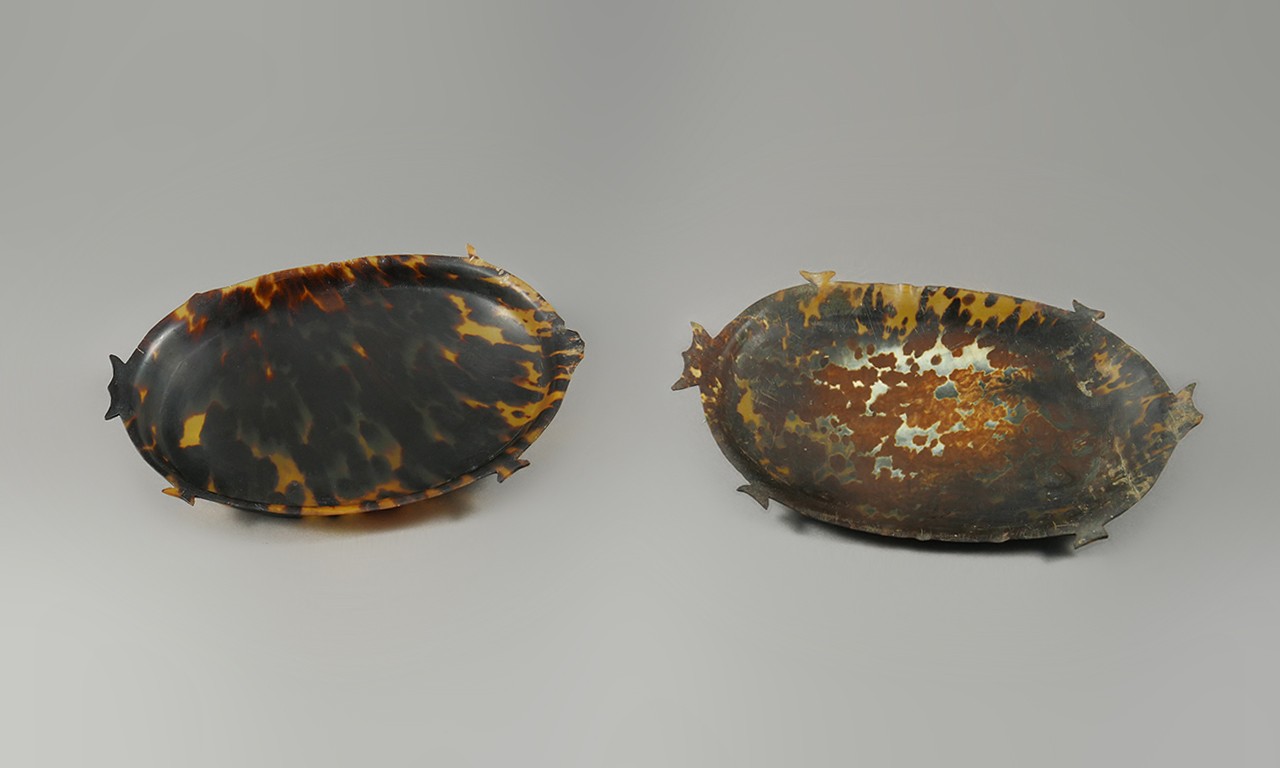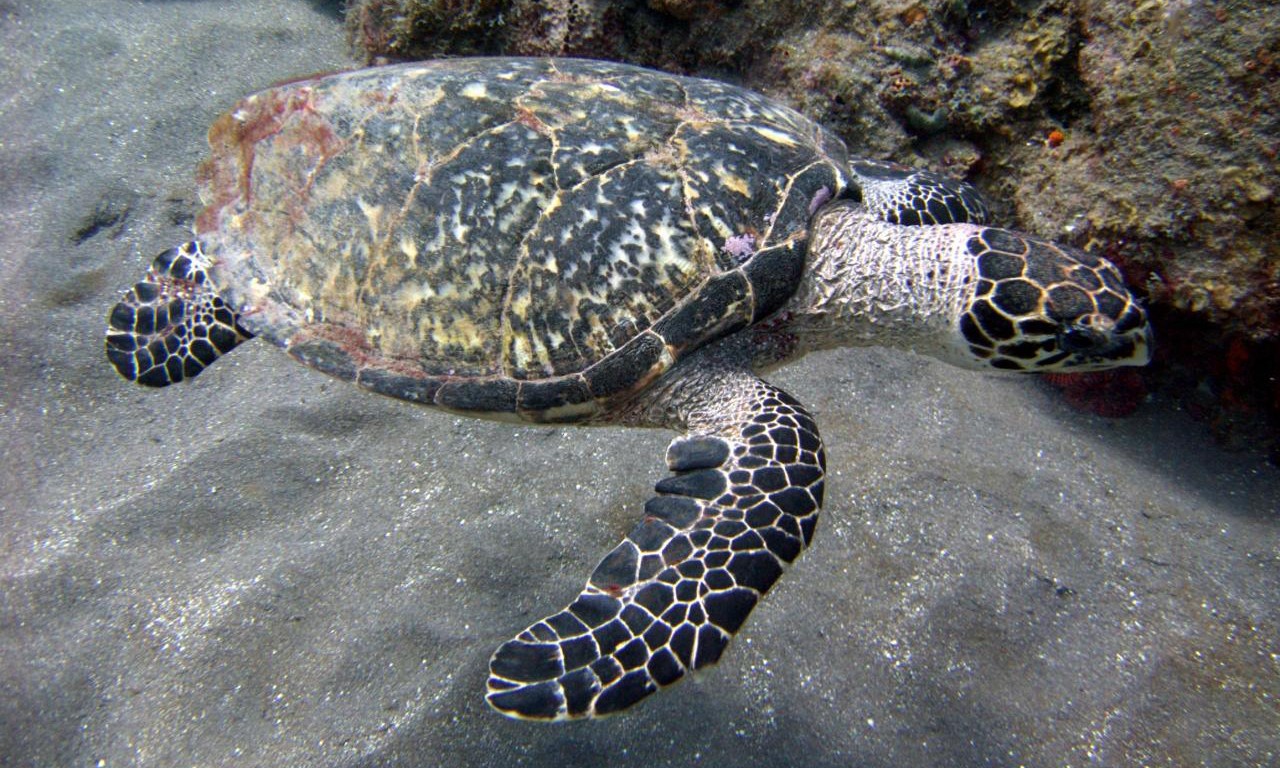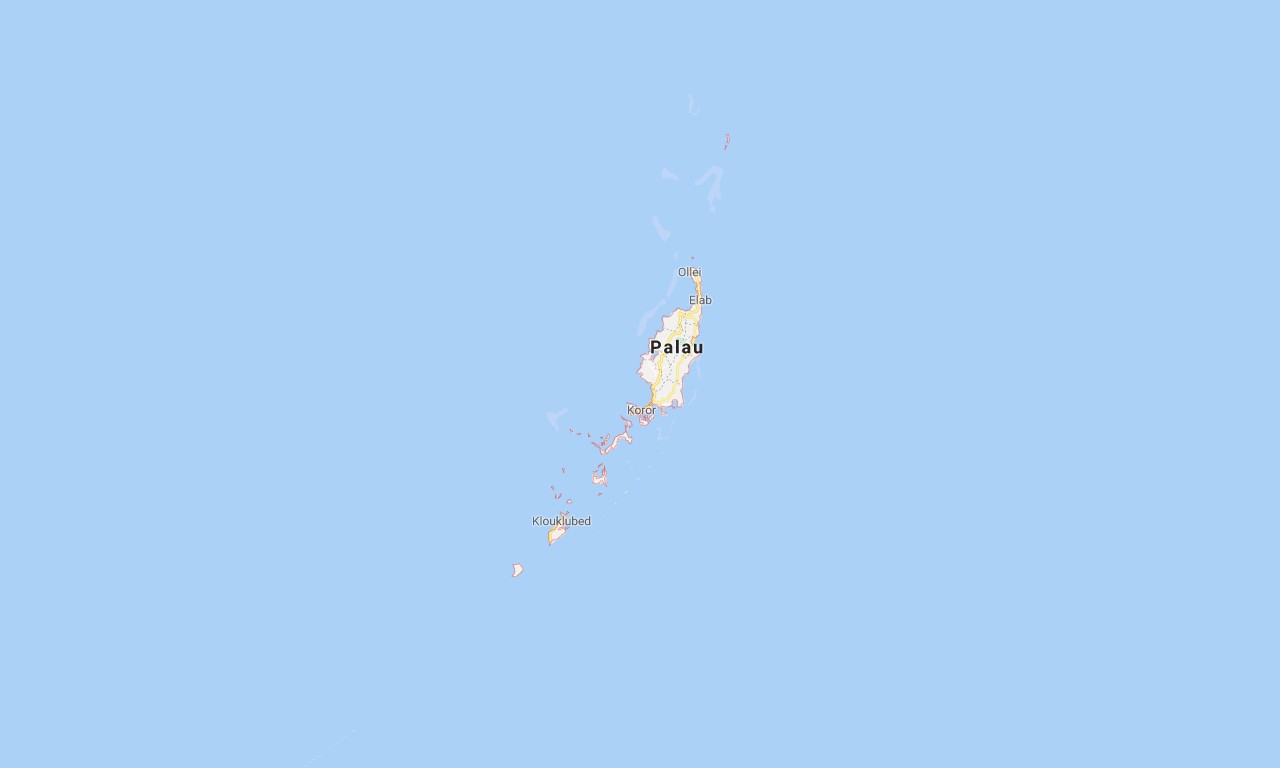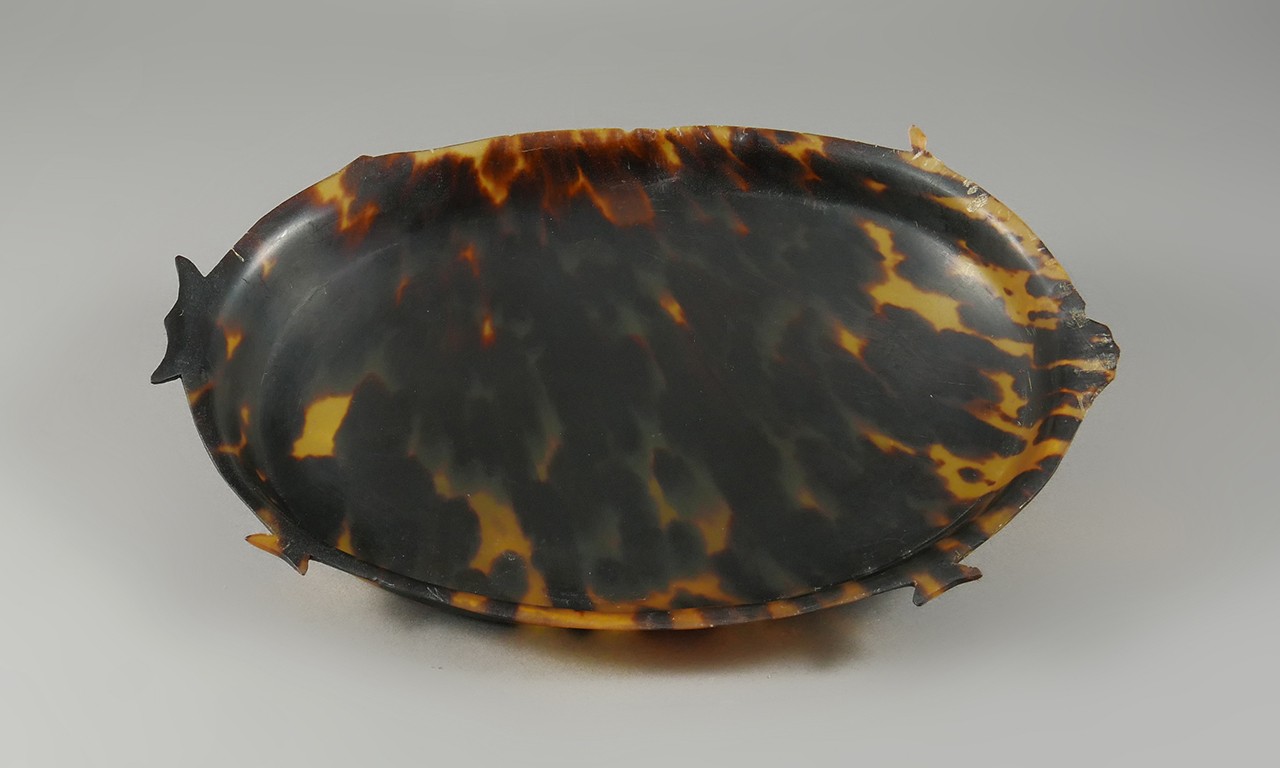2002 North Main Street
Santa Ana, California 92706
TEL: 714.567.3600
Tolúk: Palauan Women’s Currency Trays
 |
| Woman's Valuables (Toluk), early to mid 20th Century Palau, Micronesia Tortoiseshell 2019.17.32-.33 Gift of Frieda O. Wray from the Estate of Dr. & Mrs. Douglas and Carolyn Osborne |
Have Tolúk and See Them
The Bowers Museum recently acquired the Osborne Collection, an assemblage of objects originating from the island country of Palau—an archipelago located in the southwest corner of Micronesia. The collection comes as a donation from the family of Douglas and Carolyn Osborne—a husband and wife American archaeology duo who pioneered early archaeological studies in Palau. Within the donation are two tolúk currency pieces, shallow trays delicately carved and crafted from turtle shells. Tolúk were used as women’s valuables and were cherished and used currency on Palau. This post will explore the incredible craftsmanship behind the tolúk, as well as the Palauan currency and gender systems.
 |
| Hawksbill turtle off the coast of Saba. Photograph taken by MagicOlf, licensed under CC BY-SA 2.0 |
In Hot Water
The process of creating the tolúk was meticulous and began with the hawksbill sea turtle. Prized for its beautiful shell, the hawksbill was once commonly found nesting along the shores of Palau’s islands, but due to increased hunting and environmental strain, the species is now considered critically endangered. The dachelbai, a man who was skilled in creating things by hand, would utilize the individual plates that comprise the turtle’s shell to create the tray. Multiple, precise steps were needed to craft the plates into a tolúk. The plates would first be submerged in hot water to make them malleable, and then joined with wooden molds. The combined plates and wooden molds were tightened securely together and once again heated to shape the plates into a shallow tray. To set the shape, the plates and wooden molds were submerged in cold water and separated. Afterwards, the dachelbai polished the tolúk and carved ornamental projections around the edges of the tray. According to some scholars, these ornate designs may be a representation of the wings of a frigate-bird in flight.
 |
| Map of Palau, courtesy of Google Maps |
Myth and Money
The tolúk represents more than just ornate craftsmanship, however. In the traditional Palauan culture, a tolúk was used as a type of currency. According to Palauan myth, currency was understood to have a divine origin and believed to live an equal life to that of the gods. When a tolúk was acquired by a new family, it was kept carefully preserved and included as a part of the family’s shared wealth. Over time, the tolúk was exchanged between family members and passed down through generations in the matrilineal line as a precious heirloom. As a result, the tolúk slowly acquired a history and personality through each individual contact. There is no real monetary value of a tolúk in the western sense, but rather a personal, intrinsic value established by the women who view them as treasured objects meant to represent her family’s wealth and history.
 |
| Woman's Valuable (Toluk), early to mid 20th Century Palau, Micronesia Tortoiseshell; 1 × 4 5/8 × 8 1/8 in. 2019.17.33 Gift of Frieda O. Wray from the Estate of Dr. & Mrs. Douglas and Carolyn Osborne |
Women’s Wealth
The tolúk can also be utilized as a way to understand gender dynamics of the Palauan people. Men and women had different forms of currency in their culture. The tolúk was a highly valued form of specifically women’s wealth, created for and utilized solely by women. It was prohibited for members of the opposite gender to conduct currency exchange amongst one another. The act of exchanging a tolúk occurred principally between the women of different families to mark significant moments in their lives such as births, marriages, or deaths. During times of feast, women from in-law families who assisted in the organizing and food preparation for the event were often presented with the tolúk as a form of ritual payment for their services. Women’s currency exchanges always took place in the presence of men—often times during the same event, immediately following the men’s transactions. This created a uniquely feminine artifact, carrying much more significance than the simple currency of a modern culture.
 |
| The Osborne family in Palau, 1968 Courtesy of Frieda Wray |
The Osborne Collection
In addition the two tolúk currency pieces, Douglas and Carolyn Osborne—along with their daughters Frieda and Ellen—accumulated an array of Palauan objects as keepsakes throughout their multiple stays on the island country. Objects within the collection include traditional Palauan dance costumes and instruments used in celebration for the opening of the Palau Museum Men’s Meeting House, colloquially known as the Bai ra Ngesechel arChercha, in 1968. In addition, the collection also features to several carvings sold by the local dachelbai. The Osborne Collection presents a unique opportunity for the Bowers Museum to showcase unique objects from Micronesia and the Bowers Blog will explore some of these pieces and the unique history behind the Osborne family in posts to come.
Post researched and guest written by Jessica Arellano, Volunteer for the Bowers Museum Collections Department. Text and images may be under copyright. Please contact Collection Department for permission to use. References are available on request. Information subject to change upon further research.

Comments